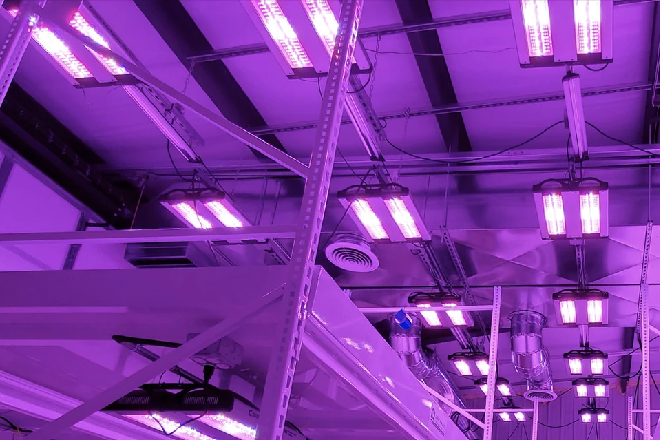Light Emitting Diode (LED) grow lights are a type of energy-efficient lights that are an option for indoor growers. The LEDs do not burn a filament, but instead, pass light through semiconductors to create their spectrum. LED grow lights can be used as the single means of lighting in a growing operation, as a supplement to natural light, or paired with other types of grow lights. Unlike other kinds of grow lights, light emitted by LEDs can be focused, so that none is dispersed or lost between the bulb and the canopy of the plants. LEDs have lengthy service lives, with bulbs lasting from 50,000 to 100,000 hours of continuous use.
Grow lights either attempt to provide a spectrum that is more tailored to the needs of the plants being cultivated. Outdoor conditions are mimicked with varying colour, temperatures and spectral outputs from the grow light, as well as varying the intensity of the lamps. Depending on the kind of plant being cultivated, the stage of cultivation and the photo period required by the plants, specific ranges of spectrum, luminous efficacy and temperature are desirable for use with certain plants and time periods. California Light Works has been guided by a vision focused on the research; design, development and manufacturing of state-of-the-art commercial LED grow lights equipment for greenhouse and indoor horticulture.
Metal halide lights are commonly used for the vegetative phase of plant growth, as they emit larger amounts of blue and ultraviolet radiation. HPS lights are also used as a single source of light throughout the vegetative and reproductive stages. In current years LED technology has been introduced into the grow light market. By planning an indoor grow light using diodes, specific wavelengths of light can be produced.
LED vs HPS Grow Lights
HPS (High- pressure sodium) grow lights have been the driving force behind indoor cultivation for decades, but with the advent of new LED technology, they are beginning to lose market share. LED grow lights are much more power-efficient than their HPS counterparts and offer at least a 1 to 1 replacement. The EGX4 330W replaces 1 HPS light. LEDs Can Be a Suitable Replacement for HPS Lamps
Indoor Grow Lights is one of the most vital elements of an indoor garden. When it comes to the spectrum of light, the particular brand of the light spectrum that you care about as indoor growers are the 400-700 nanometer range. This brand is also known as Photosynthetically Active Radiation. At California Light Works LED grow lights are the best lights for indoor growing in order to provide a safe and efficient solution for growers everywhere.
LED greenhouse lighting: A proper level of light is also very important for the quick growth of the plant and good harvest in a greenhouse requires not only water and soil. A shortage of light is a major issue in the winter season, when daylight is short and when the sunlight is absent or is not enough for efficient growing LED grow lighting is one of the main promising types of supplemental lighting for greenhouses.
Common Types of LED Grow Lights
- High-intensity discharge (HID) lights
- Metal halide (MH)
- Ceramic metal halide (CMH, CDM)
- Combination MH and HPS (“Dual arc”)
- High-pressure sodium (HPS)
- Conversion bulbs
- Switchable ballasts
- Light-emitting diodes (LEDs)
- Fluorescent
- Tube-style fluorescent lights
- Compact fluorescent lights (CFLs)
- Cold cathode fluorescent light (CCFL)
What are Full Spectrum LED Grow Lights
LED grow light technology is relatively new. One of its advantages is the ability to produce a multitude of different emission spectra that are advantageous for plant growth. A usual LED grow light typically uses a combination of blue and red LEDs. You can generally tell by the pinkish-purple light emitted – this is the result of mixing blue and red light. The reason usual LED grow lights use this formulation is that plants perform photosynthesis most effectively in the blue and red part of the spectrum.




